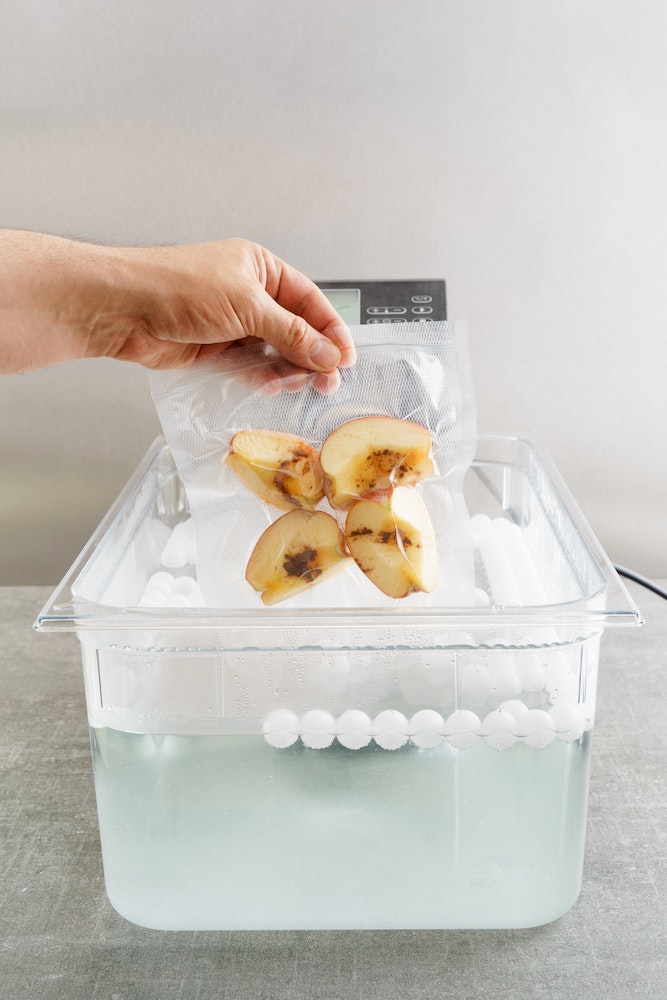How Can You Use Sous Vide Techniques to Achieve Perfectly Cooked Fish?

The beauty of sous vide cooking lies in its simplicity and precision. With just a vacuum-sealed bag, a sous vide cooker, and a bit of time, you can achieve profoundly succulent and cooked-to-perfection dishes. One of the best applications of this technique is for preparing fish. Fish can often be difficult to cook perfectly with traditional methods due to its delicate texture and the fine line between undercooked and overcooked. In this article, we will explore the use of sous vide techniques to achieve perfectly cooked fish, diving into the details such as cooking times, temperatures, and the particularities of different fish types like salmon, cod, and halibut.
Understanding the Sous Vide Technique
Sous vide is a French term that translates to "under vacuum." It’s a cooking method that involves sealing food in a plastic bag and submerging it in a water bath at a precise temperature. With traditional cooking methods, you may struggle with overcooking, undercooking, or inconsistent textures in your fish. Sous vide cooking eliminates these issues by providing a consistent temperature, leading to consistently excellent results.
Lire également : What’s the Key to a Savory Winter Squash Risotto with Crispy Sage?
This method allows the fish to cook evenly and retain its natural moisture, resulting in a firm yet flaky texture that’s hard to achieve with conventional techniques. The vacuum-sealed bag locks in flavor, ensuring that your fish is not just correctly cooked, but also deliciously infused with whatever spices and herbs you’ve chosen to use.
The Importance of Time and Temperature in Sous Vide Cooking
The key to sous vide cooking is the control it allows over time and temperature. These two factors determine the final texture and doneness of your fish. Most fish will become firm and flaky at around 130°F (54°C), but adjusting the temperature up or down by just a few degrees can make a significant difference in the result.
A voir aussi : How to Bake a Gourmet Spanish Almond Cake with Citrus Essence?
For example, if you prefer your salmon a bit on the rarer side, you might cook it at 115°F (46°C) for around 45 minutes, resulting in a tender, almost raw texture. For a firmer, more traditional texture, you might cook it at 130°F (54°C) for the same duration.
It’s essential to be aware of the thickness of your fish fillets, as this will also impact the cooking time. Thinner fillets will cook more quickly than thicker ones, and it may be necessary to adjust your cooking time accordingly.
Recipes for Sous Vide Fish
Let’s explore some specific recipes for sous vide fish. Whether you’re cooking salmon, cod, halibut, or another type of fish, there are countless ways to season and flavor your dish.
Sous Vide Salmon
For a simple and delicious sous vide salmon recipe, you’ll need:
- Salmon fillets
- Olive oil
- Salt and pepper
- Lemon slices and fresh dill for garnish
Start by seasoning your salmon fillets with salt and pepper and placing them in a vacuum bag with a drizzle of olive oil. Seal the bag and cook in a sous vide water bath at 130°F (54°C) for 30 to 45 minutes, depending on the fillet’s thickness. Once cooked, remove the salmon from the bag and pat dry. Sear it quickly in a hot pan for a nice crispy skin and garnish with lemon slices and fresh dill.
Sous Vide Cod
Cod is a lean, flaky fish that benefits immensely from sous vide cooking. For this recipe, you’ll need:
- Cod fillets
- Olive oil
- Salt and pepper
- Lemon slices and fresh parsley for garnish
Season your cod fillets with salt and pepper, then place them in a vacuum bag with a drizzle of olive oil. Seal the bag and cook in a sous vide water bath at 130°F (54°C) for 20 to 30 minutes. Once cooked, remove the cod from the bag, pat dry, and sear quickly in a hot pan. Garnish with lemon slices and fresh parsley.
Sous Vide Halibut
Halibut is a firm, meaty fish that’s a perfect candidate for sous vide cooking. Try this basic recipe:
- Halibut fillets
- Olive oil
- Salt and pepper
- Lemon slices and fresh thyme for garnish
Season the halibut fillets with salt and pepper and place them in a vacuum bag with a drizzle of olive oil. Seal the bag and cook in a sous vide water bath at 130°F (54°C) for 30 to 45 minutes. After cooking, remove the halibut from the bag, pat dry, and sear in a hot pan. Garnish with lemon slices and fresh thyme.
The Final Result: Perfectly Cooked Sous Vide Fish
Whether you’re cooking for yourself or for guests, sous vide fish is a fantastic dish to have in your culinary repertoire. The consistent temperatures and precise timing ensure that your fish is cooked to perfection, with a moist, tender texture that’s both firm and flaky. And because you’re cooking in a vacuum-sealed bag, the fish stays infused with whatever flavors you’ve added, providing a rich and complex taste.
Remember, the key to sous vide cooking is patience. While it might feel strange at first to cook your fish at such low temperatures for such extended periods, trust the process. The result will be worth the wait: a perfectly cooked piece of fish that’s firm, flaky, and bursting with flavor. So why not give it a try? Dive into the world of sous vide cooking and discover a new way to enjoy your favorite fish dishes.
Sous Vide Cooking Tips and Tricks
Sous vide cooking may seem a bit daunting at first, especially if you’re new to the technique. However, with a few tips and tricks, you will soon find it a straightforward and reliable method.
Firstly, invest in a good quality vacuum sealer. This will ensure your fish is properly sealed, preventing any water from getting into the bag and ruining your meal. It also helps to lock in the flavors, enhancing the taste of your fish.
Secondly, be patient. Sous vide cooking requires time. Cooking fish at lower temperatures for longer periods breaks down the proteins slowly, resulting in a tender, flaky texture that’s hard to achieve with other methods. Don’t be tempted to rush the process by increasing the temperature; this could result in a tough, rubbery texture.
Also, pay attention to the thickness of your fish fillets. Thicker fillets will need more cooking time than thinner ones. You can use a digital thermometer to check the internal temperature of your fish to ensure it’s cooked to your desired level of doneness.
Don’t be afraid to experiment with different flavors. The vacuum-sealed bag is an excellent opportunity to infuse your fish with a variety of spices, herbs, and marinades. From simple salt and pepper to complex combinations like chilli and lime or ginger and soy, the possibilities are endless.
Lastly, while it’s not essential, giving your fish a quick sear in a hot pan after cooking it sous vide can add a delightful crispy texture. This is especially true for fish like salmon and halibut, which have a higher fat content.
Remember, practice makes perfect. Don’t be discouraged if your first few attempts don’t turn out as expected. Keep trying, and soon enough, you’ll be cooking fish to perfection with the sous vide technique.
Conclusion: The Art of Sous Vide Cooking
In conclusion, sous vide cooking is truly a game-changer when it comes to preparing perfectly cooked fish. It allows for precise control over temperature and cooking time, ensuring your fish is cooked just the way you like it. Whether you prefer a firm, traditional texture or a tender, almost raw texture, sous vide cooking can help you achieve it.
Experimenting with different species of fish, from salmon and cod to halibut and sea bass, can provide a variety of textures and flavors for you to enjoy. Don’t forget to play around with different seasonings and garnishes too. The vacuum-sealed bag is the perfect vehicle for infusing your fish with rich, robust flavors that will make your taste buds dance.
And while sous vide cooking might seem time-consuming, remember the words of respected food writer Kenji Lopez Alt: "The best things in life are worth waiting for." So take your time, enjoy the process, and relish the results. After all, cooking is not just about the end product, but also about the journey.
So why wait? Go ahead and immerse yourself in the world of sous vide cooking. Your taste buds will thank you for it!
